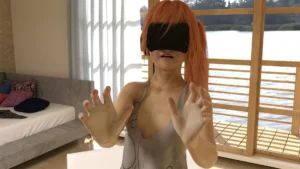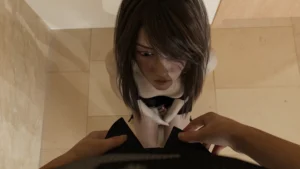
Play Bad Memories
Bad Memories review
Explore the dark narrative, gameplay, and unique features of Bad Memories
Bad Memories by Recreation is a visually rich adult visual novel that immerses players in a deeply emotional journey of trauma, redemption, and complex relationships. Centered on a protagonist returning to a troubled hometown, the game combines a dark narrative with sandbox gameplay and high-quality visuals. This article explores the core elements of Bad Memories, including its story, gameplay features, and character dynamics, offering insights for players interested in this unique adult-themed experience.
Unpacking the Story and Themes of Bad Memories
What is the narrative arc of Bad Memories?
Let’s be honest, we’ve all played visual novels where the story feels as deep as a puddle. You click through, make a few choices, and end up with a shallow ending that leaves you feeling empty. 😑 I was starting to think the genre was all fluff, until I played Bad Memories. This game’s story is something else entirely. It’s a raw, unflinching journey back to a past most of us would rather forget. The Bad Memories story isn’t just a sequence of events; it’s an emotional excavation. 🚧
The core of the Bad Memories narrative begins with a simple yet powerful premise: our protagonist, a young man we guide, returns to his sleepy, suffocating hometown after many years away. This isn’t a happy homecoming. He’s not back for a reunion or a celebration. He’s drawn back by the grim task of sorting out his deceased mother’s affairs. From the moment you arrive, the game masterfully uses the environment to tell a story. The house is a physical manifestation of the past—dusty, decaying, and filled with ghosts of a life left behind. 👻
You stand on the porch of your childhood home, key in hand. The paint is peeling, and a familiar, unsettling silence hangs in the air. A flood of images hits you: shouting, a slammed door, the sound of crying. The game doesn’t just tell you this was a difficult place; it makes you feel the weight of every memory the moment you step inside.
This return forces the protagonist to confront the trauma in Bad Memories that shaped his entire life. The narrative arc isn’t about defeating a monster or solving a grand mystery; it’s about the internal battle of facing down personal demons. The plot unfolds through a series of flashbacks triggered by objects in the house—a cracked photo frame, a forgotten toy, a specific scent. These aren’t just exposition dumps; they are visceral, interactive moments where you, the player, experience the confusion and fear of a child trying to make sense of a broken family. The Bad Memories story brilliantly makes you an active participant in piecing together the past, rather than a passive observer. 🧩
The choices you make are subtle but profoundly impactful. Do you open the door to your old bedroom, or do you walk away? Do you answer a probing question from an old acquaintance honestly, or do you deflect? These decisions shape the protagonist’s path toward either repeating the cycles of dysfunction or finding a way to break free. The brilliance of this Bad Memories narrative is that the central conflict isn’t good versus evil; it’s memory versus denial, and courage versus fear.
How does the game explore trauma and redemption?
If you’ve ever struggled with your own past, the themes in Bad Memories will hit incredibly close to home. The game doesn’t use trauma as a cheap plot device; it treats it with a startling level of authenticity. The exploration of trauma in Bad Memories is central to understanding its characters and their motivations. It’s the invisible chain that binds them all together. 🔗
The game shows how trauma isn’t a single event, but a ripple effect that distorts relationships and self-perception. The protagonist’s childhood was marked by loss and a deeply dysfunctional family environment. The game forces you to relive these moments not for shock value, but to build empathy. You understand why he is closed off, why he struggles with trust, and why he ran away in the first place. This foundation makes the pursuit of redemption so much more meaningful.
Redemption in this memory and redemption game isn’t about a grand, heroic act. It’s a quiet, painstaking process. It’s found in small, courageous choices: apologizing to someone you hurt years ago, finally listening to a different perspective on a painful memory, or simply allowing yourself to be vulnerable. One of the most powerful moments for me was a conversation with a childhood friend. My initial instinct, guided by the protagonist’s defensiveness, was to be sarcastic and dismissive. But I chose the harder path—honesty. The resulting conversation didn’t magically fix everything, but it was a first, crucial step toward mending a bridge I thought was burned forever. That’s the core of the emotional story Bad Memories delivers: redemption is earned through uncomfortable honesty, not easy victories. ✨
The Bad Memories themes of trauma and redemption are inextricably linked. You cannot have one without the other. The game argues that true redemption is only possible by first confronting the source of the pain head-on. It’s a messy, non-linear process, and the game reflects that beautifully. Some days, the protagonist makes progress; other days, he regresses. This realistic portrayal is what makes the emotional story Bad Memories tells so compelling and, frankly, cathartic.
| Key Theme | How it Manifests in the Game |
|---|---|
| Confronting the Past | Interactive flashbacks and environmental triggers force the player to actively engage with painful memories instead of passively remembering them. |
| Cycle of Dysfunction | Character dialogues and past events show how behavioral patterns are passed down, and player choices can either perpetuate or break these cycles. |
| Personal Accountability | The narrative branches heavily based on whether the protagonist takes responsibility for his own actions and their impact on others. |
| Healing as a Process | There are no “quick fix” endings. Resolution is gradual and earned through consistent, difficult choices. |
What role do memory and past relationships play?
Think of memory as the engine of the entire game. 🚂 The Bad Memories narrative is fundamentally built upon how we remember, how we misremember, and how those memories define us. The past isn’t a static thing in this game; it’s a malleable, often unreliable narrator. This is where the Bad Memories character relationships truly come to life, as they are the vessels for these memories.
Your interactions with other characters are almost entirely filtered through the lens of shared history. Meeting an old friend isn’t just a new conversation; it’s a negotiation between your memory of them, their memory of you, and the truth that likely lies somewhere in between. The game excels at creating tension through these discrepancies. One character might recall an event as a joyful adventure, while you, the player, experience it through a flashback as a moment of terror and neglect. This forces you to question everything you think you know about your own past. 🤔
The Bad Memories character relationships are the crucible where the themes are tested. Your relationship with a key family member, for instance, is fraught with unresolved anger and misunderstanding. The game doesn’t present them as a villain. Instead, through scattered memories and new conversations, you begin to piece together their own struggles and pains. This complexity makes the relationship feel heartbreakingly real. You’re not just choosing dialogue options; you’re deciding whether to hold onto a grudge or seek understanding. Are these Bad Memories a prison, or can they become a foundation for something new?
These relationships are the primary mechanism for gameplay decisions. Every choice you make in a dialogue tree is essentially answering the question: “How will I let my past dictate my present?” Will you:
* Recreate old patterns? (e.g., responding to conflict with anger, just like you witnessed as a child)
* Challenge them? (e.g., choosing a response of vulnerability or patience instead)
The Bad Memories story uses these character relationships to show that we are not solely defined by what happened to us, but by how we choose to engage with those memories and the people connected to them. It’s a powerful reminder that while we can’t change the past, we have absolute agency over how we carry it into the future. The ultimate goal of this memory and redemption game is not to erase the bad memories, but to integrate them into a healthier, more whole sense of self. 🌱
In conclusion, the depth of the Bad Memories story sets it apart. Its thoughtful exploration of trauma in Bad Memories, its realistic path toward redemption, and its sophisticated use of memory to drive both plot and player agency create an emotional story Bad Memories fans will not soon forget. The Bad Memories narrative is a brave and necessary entry into the visual novel genre, proving that stories about healing can be just as gripping as any epic adventure.
Bad Memories offers a compelling blend of emotional storytelling, player-driven gameplay, and rich visual presentation that sets it apart in its genre. Whether you are drawn to its deep narrative exploring trauma and redemption or its flexible sandbox style, the game provides a unique experience that challenges and engages. Dive into Bad Memories to confront the past, shape your story, and explore complex relationships in a mature, immersive setting.




























